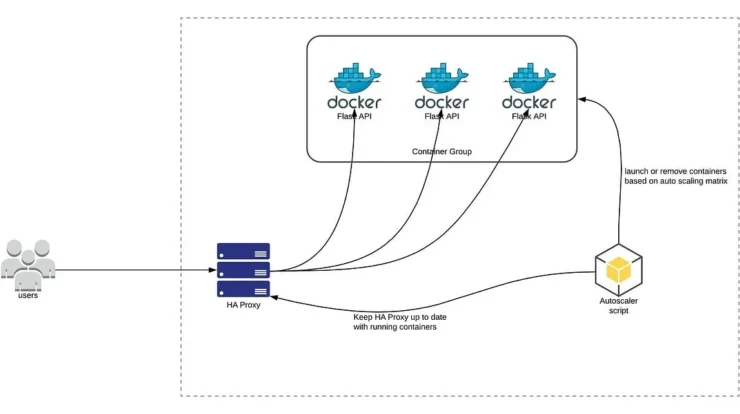
Modern businesses demand agility and responsiveness, particularly when handling fluctuating workloads and unpredictable user traffic.
Cloud hosting with auto scaling offers a powerful solution to this challenge, dynamically adjusting computing resources in real-time to maintain optimal performance and ensure seamless service delivery.
This dynamic resizing capacity is pivotal for applications experiencing variable demand, preventing bottlenecks and outages during peak usage periods.
Imagine a web application experiencing a surge in traffic, potentially causing server overload and service interruptions. Auto scaling, a core component of cloud hosting, automatically allocates more computing power to handle the increased load.
This capability translates to enhanced user experience, guaranteed availability, and ultimately, a more robust and scalable online presence. Cloud providers manage the provisioning and de-provisioning of resources, ensuring smooth operation.
Furthermore, cloud hosting with auto scaling fosters cost-effectiveness by only paying for the resources utilized at any given moment. Unused computing power isn’t wasted, significantly reducing operational expenses.
From e-commerce platforms experiencing daily spikes in online orders to social media applications handling global traffic fluctuations, the benefits of cloud hosting with auto scaling are demonstrable.
The flexibility and efficiency of this approach make it an indispensable tool for businesses seeking to optimize their IT infrastructure, improve uptime, and guarantee a high-performing digital presence regardless of workload demands.
Understanding the mechanisms of cloud hosting with auto scaling empowers businesses to build robust and scalable applications, ensuring resilience in today’s fast-paced technological landscape.
Understanding the Foundation of Dynamic Resource Allocation
Cloud hosting with auto scaling relies on the principle of dynamically adjusting resources, ensuring consistent performance regardless of workload fluctuations. This fundamental concept is crucial for maintaining a responsive and resilient online presence.
The concept of auto scaling within the cloud environment signifies a crucial shift from static infrastructure setups to dynamic resource management. A crucial element within this concept is the automation of resource provisioning.
This dynamic adjustment of computing power is a key attribute of cloud hosting, responding effectively to unpredictable surges and declines in demand. It is the automatic allocation and deallocation of resources that differentiates cloud hosting from traditional infrastructure.
Auto-scaling addresses the significant challenge of handling variable workloads in cloud-based applications. Traditional methods for managing fluctuating demands are often cumbersome and resource-intensive, requiring manual intervention and complex configurations. Cloud-based auto scaling eliminates these manual steps.
The ability to seamlessly adapt to changes in traffic and demands is the core benefit of cloud hosting with auto scaling. This adaptability ensures uninterrupted operation during periods of peak usage without affecting application performance.
Cloud providers typically handle the complex tasks associated with provisioning and de-provisioning resources, ensuring smooth operation and eliminating the need for manual intervention by the user. This automation simplifies management and frees resources for other business concerns.
The proactive nature of auto scaling is vital to avoiding performance bottlenecks or service interruptions during periods of increased demand. By dynamically adjusting resources, the solution provides a more consistent user experience and a dependable system.
Understanding the Foundation of Dynamic Resource Allocation
Cloud hosting with auto scaling hinges on a fundamental principle: the dynamic adjustment of resources to match fluctuating workloads.
This dynamic resizing ensures consistent application performance, irrespective of the demand fluctuations.
Auto scaling in a cloud environment represents a departure from static infrastructure models, moving towards a flexible and adaptable resource management paradigm.
A critical component of this dynamic approach is the automation of resource provisioning.
The automatic allocation of computing power during peak demand periods, and its subsequent release during lulls, is a key attribute of cloud hosting, which sharply contrasts with traditional infrastructure models.
This automatic adjustment ensures a robust response to unpredictable fluctuations in demand, which are common in many online services.
The ability to automatically adjust resources is a key differentiator between cloud hosting and traditional hosting methods.
This dynamic allocation of resources effectively mitigates potential bottlenecks and outages that can occur during periods of heightened demand.
Cloud providers utilize sophisticated algorithms to monitor resource utilization and respond to changes in real time, maintaining optimal performance.
Scalability, a crucial element of cloud hosting with auto scaling, is a direct result of this automatic adjustment of computing resources.
The elasticity inherent in this approach significantly enhances application resilience, accommodating varying workloads without compromising performance.
Auto scaling is a critical component for applications experiencing variable usage patterns, enabling them to handle sudden spikes in traffic and maintain a seamless user experience.
This capability is particularly valuable during peak times, ensuring consistent performance and avoiding disruptions in service delivery.
The capacity to scale resources automatically addresses the significant challenge of unpredictable workloads, allowing applications to respond effectively to demand fluctuations.
By implementing auto scaling, businesses can maintain a consistent level of service availability, crucial for maintaining customer satisfaction and preserving business continuity.
The consistent application performance offered by cloud hosting with auto scaling is essential for maintaining a reliable and trustworthy online presence, especially for applications with unpredictable user traffic.
Effective auto scaling ensures the application remains responsive and capable of handling fluctuating demand, minimizing disruptions to users.
This dynamic allocation of resources, a cornerstone of cloud hosting with auto scaling, results in significant operational efficiency and cost savings.
The flexibility inherent in cloud hosting with auto scaling is crucial in accommodating the dynamic nature of modern business operations.
Ultimately, auto scaling enables businesses to optimize resource utilization, minimizing wasted capacity and maximizing efficiency in the cloud environment.
Managing Cloud Resources with Auto-Scaling
Auto-scaling, a crucial component of cloud hosting, dynamically adjusts computing resources in response to fluctuations in demand.
This adaptability is vital for maintaining application performance and ensuring optimal resource utilization.
Efficiently managing cloud resources through auto-scaling is critical for businesses requiring on-demand scalability and cost-effectiveness.
The third major aspect of cloud hosting with auto-scaling revolves around the effective management of these dynamically allocated resources.
This includes monitoring resource usage, defining scaling policies, and implementing strategies for scaling up or down based on real-time requirements.
This process ensures that applications maintain consistent performance under varying workloads, optimizing resource allocation and minimizing unnecessary costs.
Effective resource management in cloud hosting with auto-scaling is paramount to achieving optimal application performance.
Monitoring resource utilization, such as CPU, memory, and network bandwidth, is an essential part of this process. This allows for the identification of patterns and trends in resource demands.
Setting appropriate scaling policies is also key. These policies define the conditions under which resources should be scaled up or down, such as specific CPU thresholds or incoming request rates.
A well-defined scaling policy is the cornerstone of a successful auto-scaling strategy.
For example, during peak hours of website traffic, auto-scaling would automatically increase the number of virtual machines to handle the increased load. Conversely, during low traffic periods, resources would be reduced to minimize costs without sacrificing availability.
Implementing scaling policies often involves choosing between different scaling strategies, like horizontal scaling (adding more resources) or vertical scaling (enhancing the capacity of existing resources).
This careful consideration enables the dynamic allocation of resources in the cloud.
Another essential component of this resource management lies in ensuring the reliability and availability of the cloud infrastructure itself.
This reliability is paramount, as unpredictable scaling can lead to disruptions.
Consequently, robust disaster recovery strategies are often implemented alongside auto-scaling mechanisms to mitigate potential service disruptions.
Moreover, implementing proper monitoring tools allows for the detection of anomalies and potential issues, helping to maintain optimal performance.
Maintaining a balance between responsiveness, resource optimization, and application performance is achieved through the systematic management of cloud resources with cloud hosting and auto-scaling.
These strategies for managing cloud resources with auto-scaling are pivotal for achieving both performance and cost efficiency in the modern cloud environment.
Maintaining Scalability and Reliability with Cloud Hosting Auto Scaling
The fourth crucial aspect of cloud hosting with auto scaling is maintaining scalability and reliability, ensuring seamless performance even during peak demands or unexpected surges in traffic.
This necessitates a robust and adaptable infrastructure that automatically adjusts resources to match fluctuating workloads, without human intervention.
Efficient resource allocation is paramount in cloud hosting with auto scaling, allowing the system to dynamically provision or de-provision computing resources (such as servers, storage, and networking) in response to real-time demands, promoting optimal performance.
By continuously monitoring system metrics, such as CPU utilization, network traffic, and memory consumption, cloud-based auto-scaling solutions can anticipate and adapt to changes in workload, ensuring the system remains responsive and efficient even during periods of high traffic or increased processing requirements.
Furthermore, this aspect of cloud hosting with auto scaling contributes to cost optimization. By automatically scaling resources up or down based on demand, businesses only pay for the resources they need, preventing unnecessary costs associated with maintaining excess capacity during low periods.
This inherent efficiency is a key benefit of cloud hosting with auto scaling, driving down operational expenditure and improving return on investment.
The seamless transition between scaling up and scaling down in cloud hosting with auto scaling is also critical. This should happen without disruption or noticeable performance lag, preserving a high-quality user experience. Implementing a system that achieves this seamless scaling is a key indicator of a robust, well-designed cloud hosting infrastructure.
Effective monitoring and automated responses to changing workloads, within a robust auto-scaling architecture, enable high levels of reliability and availability. This is essential to prevent service disruptions and maintain user trust in the cloud hosting platform.
In conclusion, maintaining scalability and reliability is not just a desirable feature but a fundamental requirement of a well-executed cloud hosting with auto scaling strategy.
Cloud hosting with auto scaling has emerged as a crucial technology for modern businesses seeking agility, scalability, and cost-effectiveness in managing their IT infrastructure.
The ability to dynamically adjust resources based on demand, automatically scaling up or down as needed, eliminates the complexities and costs associated with traditional, fixed-capacity solutions. This agility is particularly valuable in today’s rapidly changing market where unpredictable spikes in traffic or workload are commonplace.
The inherent elasticity of cloud hosting with auto scaling allows businesses to respond swiftly to fluctuations in demand, ensuring consistent performance and a seamless user experience while minimizing operational overhead.
This flexibility translates directly to significant cost savings, as organizations only pay for the resources they consume. By avoiding over-provisioning and ensuring optimal resource utilization, cloud hosting with auto scaling optimizes financial performance.
In conclusion, cloud hosting with auto scaling is not simply a technological advancement; it’s a strategic imperative for businesses seeking to adapt to the ever-evolving digital landscape. Its inherent flexibility, cost-effectiveness, and capacity to handle unpredictable demands make it a vital component for driving success in the modern economy. Embracing cloud hosting with auto scaling is no longer an option, but a necessity for staying competitive and achieving optimal operational efficiency.





